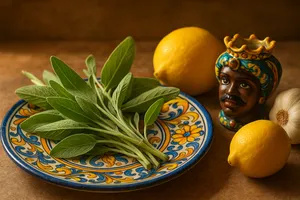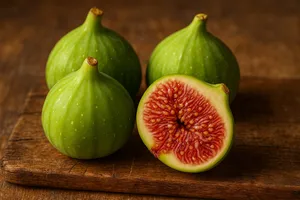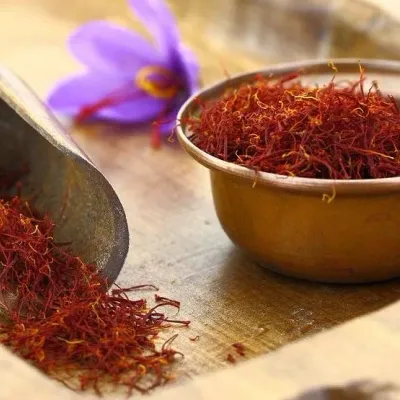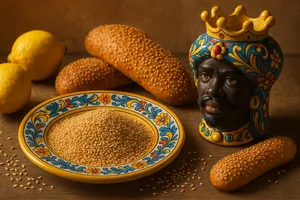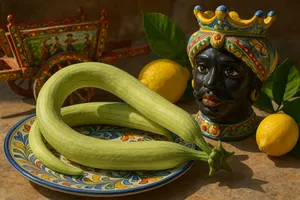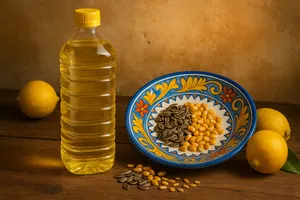Overview
Margarine is a vegetable-based dietary fat developed in the nineteenth century as an economical alternative to butter. Made primarily from vegetable oils subjected to hydrogenation or interesterification, margarine became widely used during the twentieth century thanks to its lower cost and technical qualities that make it suitable for specific applications in pastry and industrial baking.
In Sicily, where culinary tradition favours olive oil and lard over animal fats such as butter, margarine entered both domestic and professional use mainly after the Second World War, a period marked by economic hardship. It was used as a butter substitute in sweets and other preparations, although traditional Sicilian cooking did not include it. Even today, margarine divides pastry chefs and cooks: some value it for its technical characteristics, while others reject it in favour of traditional fats such as butter, oil, or lard. Understanding its composition, properties, and uses is essential for choosing when and whether to employ it.
Characteristics
Margarine appears as a fatty mass with a consistency similar to butter, pale yellow in colour (artificially coloured to resemble butter), and spreadable at room temperature. Its texture ranges from soft and creamy to firmer, depending on the type and temperature.
The flavour is neutral or lightly buttery in flavoured versions, never as rich as real butter. Its aroma is faint and artificial, lacking the aromatic complexity of butter. Margarine melts readily with heat and does not foam like butter because it contains no milk proteins.
Unlike butter, a natural emulsion of milk fats, margarine is a technological product made by emulsifying vegetable oils with water and adding emulsifiers, stabilisers, colourants, and flavourings to imitate butter’s characteristics.
Types
Classic margarine
Made with partially hydrogenated vegetable oils, it contains trans fatty acids considered harmful to health. This traditional version is less used today due to health concerns associated with trans fats.
Non-hydrogenated margarine
Produced with non-hydrogenated vegetable oils through interesterification or fractionation. It contains none or only minimal amounts of trans fats. This modern version is preferred for its better nutritional profile.
Pastry margarine
Formulations created specifically for professional pastry use, with a high fat content (80–84%), a workable consistency, and an optimal melting point for puff pastry, croissants, and leavened doughs. Pastry chefs appreciate it for its stability and ease of handling.
Spreadable margarine
A soft and creamy version, easy to spread even straight from the refrigerator, with reduced fat content (60–70%) and a higher proportion of water. Used mainly as a spread on bread.
100% vegetable margarine
Formulations free from animal-derived components, used by vegetarians and vegans as a butter alternative. Some versions use coconut, palm, or other tropical oils to achieve a solid texture.
Composition
Margarine typically contains 80–84% fat (in standard versions, less in spreadable varieties), 15–18% water, emulsifiers (soy lecithin or others), salt, colourants (usually beta-carotene for the yellow colour), flavourings, and added vitamins (A, D, E).
The vegetable oils used may include sunflower, maize, soya, rapeseed, palm, or coconut, in various combinations. The exact composition varies by producer, and reading labels is essential for knowing the specific ingredients.
Modern non-hydrogenated margarines use technological processes other than hydrogenation to solidify liquid vegetable oils: interesterification (reorganising fatty acids), fractionation (separating solid from liquid components), or blending oils with different melting points.
Culinary use
Margarine has several culinary and pastry applications.
Leavened pastry
Specific pastry margarines are used to prepare puff pastry, croissants, Danish pastries, and other leavened products where plasticity and controlled melting are crucial. Many professional bakeries prefer them to butter for their superior stability during handling.
Cakes and pastries
Margarine can replace butter in cakes, loaf cakes, and biscuits. The result is different: bakes made with margarine tend to be softer and stay moist longer but have a less rich and aromatic flavour compared with those made with butter.
Bread and focaccia
Used in industrial baking and some homemade preparations as an economical alternative to butter or oil. It provides softness and moisture to the dough.
Spreadable use
Spreadable margarines are used on bread and toast as an alternative to butter. They have the advantage of being soft straight from the refrigerator.
Cooking
Margarine may be used for pan-cooking or greasing baking tins, though oil or butter is generally preferred for flavour and quality.
Margarine vs butter
The comparison between margarine and butter is key to making informed choices.
Butter: A natural product obtained from cream, with a rich, complex flavour and distinctive aroma. It contains saturated fats and cholesterol, natural vitamins A and D, and melts at a relatively low temperature producing foam (due to milk proteins). It gives pastries incomparable flavour and fragrance.
Margarine: A technological product made from vegetable oils, with a neutral or artificial flavour, faint aroma, and variable composition (may contain trans fats if hydrogenated, or saturated fats if made from tropical oils), with vitamins added artificially. It contains no cholesterol, offers greater stability during processing, is generally cheaper, and yields different results in pastry.
From a nutritional standpoint, the debate is complex. Traditional hydrogenated margarines containing trans fats are considered harmful. Modern non-hydrogenated margarines are better, but quality still depends on the oils used. Butter contains saturated fats and cholesterol but is a natural product with no additives. The choice depends on health considerations, ethics (vegans choose margarine), taste, and specific uses.
Use in Sicily
In traditional Sicilian cooking, margarine never played a significant role. Tradition favoured olive oil, lard, and, to a lesser extent, butter in sweet preparations of northern influence. Margarine entered general use during the post-war period as an economical alternative when butter was expensive and hard to find.
Some generations of Sicilians remember cakes and biscuits made with margarine during times of economic scarcity. As living conditions improved and traditions were rediscovered, domestic use of margarine decreased, while it persisted in industrial settings and in certain pastry workshops for specific technical purposes.
Today, the tendency is to return to traditional fats: quality butter for pastries that benefit from it, Sicilian extra virgin olive oil for most preparations, and lard for certain traditional recipes. Margarine remains an option for those who prefer it for economic, dietary (no cholesterol), or ethical (vegetarian/vegan) reasons.
Storage
Margarine should be stored in the refrigerator at 4–6°C, well sealed in its original packaging or in an airtight container to prevent it from absorbing odours. It keeps for 1–3 months after opening, always checking the expiry date on the packaging.
It should not be left at room temperature for long periods, as it may turn rancid, although it is generally more stable than butter thanks to added antioxidants. It can be frozen for 6–12 months, well wrapped to avoid freezer burn.
Once thawed, it should be used within a few days and must not be refrozen. Rancid margarine has an unpleasant smell and taste and a discoloured appearance, and should be discarded.
Tips for buying
When buying margarine, carefully read the label and check:
- Type: prefer non-hydrogenated margarines, free from trans fats or with minimal content (less than 1%)
- Oils used: prefer those based on sunflower, maize, or rapeseed rather than palm or tropical oils
- Fat content: for pastry use, choose versions with high fat content (80–84%)
- Additives: the fewer additives and artificial ingredients, the better
- Expiry date: ensure it is distant
For professional pastry work, choose margarines specifically designed for lamination and leavened doughs, which ensure optimal technical performance. For home use, consider whether it is truly necessary or if butter or oil might be more suitable depending on the preparation.
Health considerations
Traditional hydrogenated margarines containing trans fats have been linked to cardiovascular risks greater even than those associated with saturated fats. Trans fats increase LDL ("bad") cholesterol and decrease HDL ("good") cholesterol, raising the risk of heart disease.
Modern non-hydrogenated margarines have a better lipid profile, but quality still depends on the oils used. Those based on oils rich in unsaturated fats (sunflower, maize) are preferable. Those made with palm or coconut oil, though vegetable in origin, contain mainly saturated fats.
Margarine contains no cholesterol (being vegetable-based), an advantage for those who must limit its intake, but this does not automatically make it healthier than butter. The choice must be assessed within the context of an overall balanced diet.
Many nutritionists recommend preferring traditional, natural fats (extra virgin olive oil, quality butter) used in moderation over highly processed industrial products such as margarine.
Curiosities
Margarine was invented in 1869 by the French chemist Hippolyte Mège-Mouriès at the request of Napoleon III, who sought an economical butter substitute for the army and the lower classes. The name derives from the Greek “margarites” (pearl), referring to its original pearly white colour (it was initially white, later coloured to resemble butter).
For decades, dairy industries in many countries lobbied to restrict the production and sale of margarine, seen as unfair competition for butter. In some American states, it was illegal to colour margarine yellow to avoid confusion with butter: it was sold white, with a small packet of colouring for consumers to mix in.
During the world wars, margarine spread widely due to butter shortages and rationing. Entire generations grew up with margarine as their primary fat, associating it with times of economic difficulty.
In the 1990s, when concerns about trans fats emerged, the margarine industry had to reformulate products completely, eliminating hydrogenation and developing new technological processes. This led to modern margarines, very different from their traditional predecessors.
In Sicily, a popular saying went: “Cu' mancia margarina 'nveci di burru, nun sapi chi è bonu” (“Who eats margarine instead of butter does not know what is good”), reflecting the perception of margarine as an inferior substitute, though this view was influenced as much by social prejudice as by objective assessment.
Curiously, some leading professional pastry chefs use specific margarines for particular technical preparations (such as puff pastry) for their superior handling performance, while reserving high-quality butter for preparations where flavour is paramount. It is a technical choice rather than a mark of lower quality.


